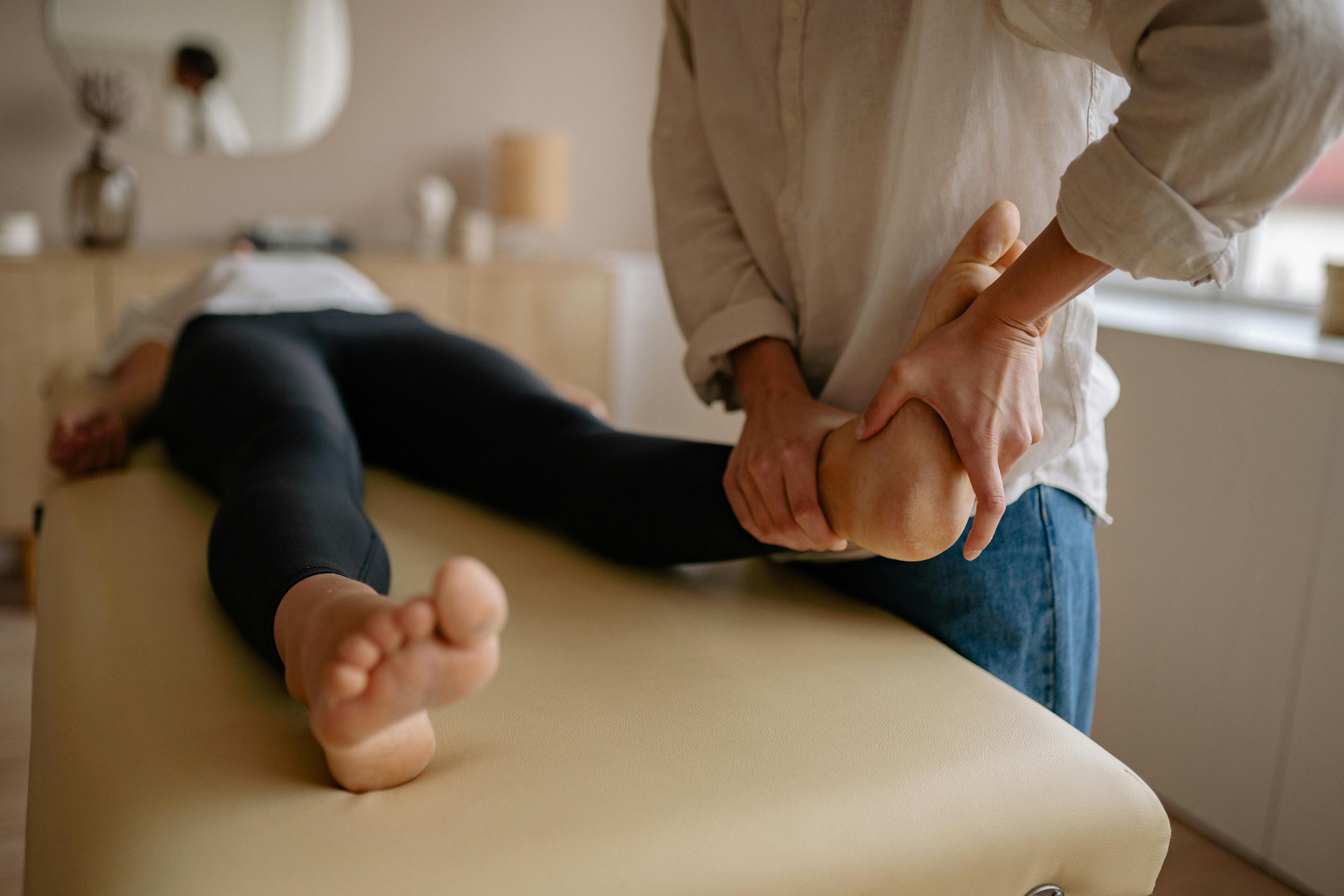Foot pain is a common issue that can affect people of all ages. Whether it’s caused by injury, poor posture, or underlying medical conditions, managing foot pain effectively is crucial to maintaining mobility and overall quality of life.
This article will guide you through the causes of foot pain, available treatments, and strategies for managing and preventing discomfort.

Visit our website to find the best podiatrist in Melbourne who can assist you with your foot health needs.
Understanding Foot Pain
Foot pain can stem from a variety of factors. Understanding the root cause is key to determining the most effective treatment plan. Below are some common causes of foot pain:
Common Causes Of Foot Pain
- Plantar Fasciitis: This condition occurs when the tissue that runs across the bottom of your foot becomes inflamed. It’s one of the most common causes of heel pain.
- Arthritis: Joint inflammation can cause pain, stiffness, and swelling in the foot.
- Bunions: These are bony bumps that form at the base of the big toe, causing pain and swelling.
- Hammertoe: A deformity of the toe that causes it to bend, leading to pain, especially when wearing shoes.
- Stress Fractures: Small cracks in the bones of the feet caused by repetitive force or overuse.
- Neuropathy: Nerve damage can lead to burning, tingling, or numbness in the feet.
Risk Factors For Foot Pain
Several factors can increase your risk of developing foot pain. These include:
- Age: As you age, your feet undergo changes that may lead to pain, such as a decrease in fatty tissue or joint flexibility.
- Obesity: Excess weight places additional pressure on the feet, which can lead to conditions such as plantar fasciitis.
- Footwear: Wearing ill-fitting shoes, particularly those with high heels or inadequate arch support, can cause or worsen foot pain.
- Medical Conditions: Conditions like diabetes, arthritis, and gout can increase the likelihood of experiencing foot pain.
How To Manage Foot Pain
Effective management of foot pain requires a multi-faceted approach that addresses the underlying cause and provides relief from discomfort.
Rest And Elevation
One of the simplest ways to manage foot pain is through rest. Avoid putting excessive pressure on the affected foot to give it time to heal. Elevating the foot can also help reduce swelling, particularly in the case of injury or inflammation.
- How to Elevate Your Foot: When resting, try to elevate your foot to a level above your heart. This helps improve circulation and reduces swelling.
Cold And Heat Therapy
Both cold and heat treatments can help manage foot pain, depending on the cause.
- Cold Therapy: Applying an ice pack to the affected area can reduce inflammation and numb the pain. Cold therapy is beneficial in the first 48 hours after an injury.
- Heat Therapy: Heat can help relax muscles and improve blood flow. This is particularly useful for conditions like arthritis or muscle tension.
Footwear Adjustments
Choosing the proper footwear is one of the most critical steps in managing foot pain. Ill-fitting shoes can exacerbate or even cause foot problems.
- Proper Fit: Shoes should provide adequate support, especially in the arch and heel. Avoid tight shoes, especially around the toes.
- Orthotics: Custom orthotic insoles can provide additional arch support and cushioning, reducing pressure on the feet.
- Avoid High Heels: High heels can place undue stress on the feet, leading to pain and deformities like bunions and hammertoes.
Stretching And Strengthening Exercises
Stretching and strengthening exercises can be incredibly effective in managing foot pain, particularly if the pain is caused by conditions such as plantar fasciitis or Achilles tendonitis.
- Plantar Fascia Stretch: Sit with one leg extended in front of you. Use a towel or belt to gently pull your toes towards your shin by wrapping it around the ball of your foot. Hold for 30 seconds, and repeat several times a day.
- Toe Raises: Stand with your feet flat on the ground, then slowly raise your heels, lifting your body weight onto the balls of your feet. Hold for a few seconds before lowering back down. This helps strengthen the muscles in your feet and calves.
Medical Treatments
If home remedies and lifestyle changes are not effective in managing foot pain, it may be time to consult a healthcare provider. Some medical treatments for foot pain include:
- Corticosteroid Injections: For conditions such as plantar fasciitis or arthritis, a corticosteroid injection can help reduce inflammation and alleviate pain.
- Surgery: In severe cases, surgery may be required to correct deformities or remove damaged tissue. This is typically only considered when other treatments have failed.
Preventing Foot Pain
While some foot pain is inevitable, there are steps you can take to prevent it from occurring or worsening. Prevention involves maintaining healthy habits and being mindful of how you treat your feet.
Maintain A Healthy Weight
Excess weight puts added pressure on your feet, leading to pain and discomfort. Maintaining a healthy weight can help reduce the strain on your feet and prevent conditions like plantar fasciitis and arthritis.
Practice Good Foot Hygiene
Taking care of your feet can help prevent many common foot problems.
- Wash Your Feet Daily: Clean your feet with soap and water to remove dirt and bacteria.
- Dry Your Feet Thoroughly: Ensure your feet are dry, especially between the toes, to prevent fungal infections.
- Trim Your Toenails Regularly: Cutting your toenails straight across can help prevent ingrown toenails, a common source of foot pain.
Choose Supportive Footwear
As mentioned earlier, wearing shoes with proper support can go a long way in preventing foot pain. Ensure your shoes offer sufficient cushioning, particularly in the arch and heel areas.
Stay Active
Regular physical activity helps keep your feet healthy by improving circulation and strengthening the muscles and ligaments in your feet. Be sure to engage in low-impact exercises, such as swimming or walking, to avoid putting excess strain on your feet.
Use Orthotic Insoles
If you have flat feet or high arches, custom orthotic insoles can help provide additional support and prevent discomfort. These insoles can also help with alignment, reducing the risk of injury and pain.
When To Seek Professional Help
While many cases of foot pain can be managed at home, there are situations when it’s essential to seek professional medical advice.
- Persistent or Severe Pain: If your foot pain persists or worsens after several days of rest and self-care, or if the pain is severe, it’s time to consult a healthcare provider.
- Injury: If you’ve experienced a recent injury, such as a sprain or fracture, seeking medical attention is essential to ensure proper healing.
- Numbness or Tingling: If you experience numbness, tingling, or weakness in your feet, this could indicate nerve damage or another serious condition that requires professional treatment.
Conclusion
Managing foot pain effectively involves understanding the underlying causes, using a combination of treatments, and making lifestyle adjustments. Key strategies for managing foot pain include rest, applying ice and heat therapy, selecting the proper footwear, engaging in regular foot exercises, and maintaining a healthy weight.
If conservative treatments are not effective, seeking professional medical help is crucial for proper diagnosis and treatment. By following these steps, you can reduce foot pain and prevent further issues, allowing you to maintain a higher quality of life.
Frequently Asked Questions
What Are The Best Footwear Options For Managing Foot Pain?
The best footwear for managing foot pain provides proper arch support, cushioning, and a comfortable fit. Shoes with a wide toe box, firm heel support, and cushioning can help reduce pressure on sensitive areas, such as the heels and balls of the feet. Avoid high heels and shoes with narrow or rigid soles, as they can worsen foot pain. Custom orthotic insoles can also offer additional support and comfort.
How Can I Tell If My Foot Pain Requires Medical Attention?
If your foot pain persists despite home remedies, worsens progressively, or is accompanied by symptoms such as swelling, bruising, or difficulty walking, it’s time to seek medical advice. Additionally, if you experience numbness, tingling, or sharp shooting pain, these could be signs of nerve damage or other serious conditions. A healthcare professional can diagnose the underlying cause and recommend appropriate treatment.
Can Exercise Help Reduce Foot Pain?
Yes, specific exercises can help strengthen the muscles in your feet and legs, improving overall foot function and reducing pain. Stretching exercises, such as the plantar fascia stretch or Achilles tendon stretches, can help ease tension in the feet. Strengthening exercises, such as toe raises and foot rolls, can help support the muscles and prevent pain from recurring. However, be sure to avoid activities that exacerbate pain and consult a professional for tailored advice.
